Abstract
Lactobacilli were found in saliva, on teeth, and on the dorsum of the tongue, the vestibular mucosa, and the hard palate in humans. Their proportions in saliva, expressed as percentage of the anaerobically cultivable flora, were 10- to 100-fold higher than those on the tooth surface, but were comparable to those on the epithelial surfaces. The adherence of Lactobacillus casei and L. fermenti to oral surfaces was compared with that of streptomycin-labeled Streptococcus sanguis and S. salivarius by using in vitro-cultivated cells. The affinity of both Lactobacillus species for the tooth surface was very low compared with that of S. sanguis but was somewhat higher than that of S. salivarius. The lactobacilli and both Streptococcus species adhered to a similar extent to the dorsum of the tongue, whereas the affinity of the lactobacilli and S. salivarius for the vestibular mucosa was about one-half of that of S. sanguis. The results suggest that the affinity of lactobacilli for oral surfaces significantly influences their proportional distribution in the mouth. The relatively low affinity of lactobacilli for the tooth surface suggests that their recognized association with carious lesions and mechanical appliances under certain conditions may be due primarily to mechanical retention rather than unique growth conditions.
Full text
PDF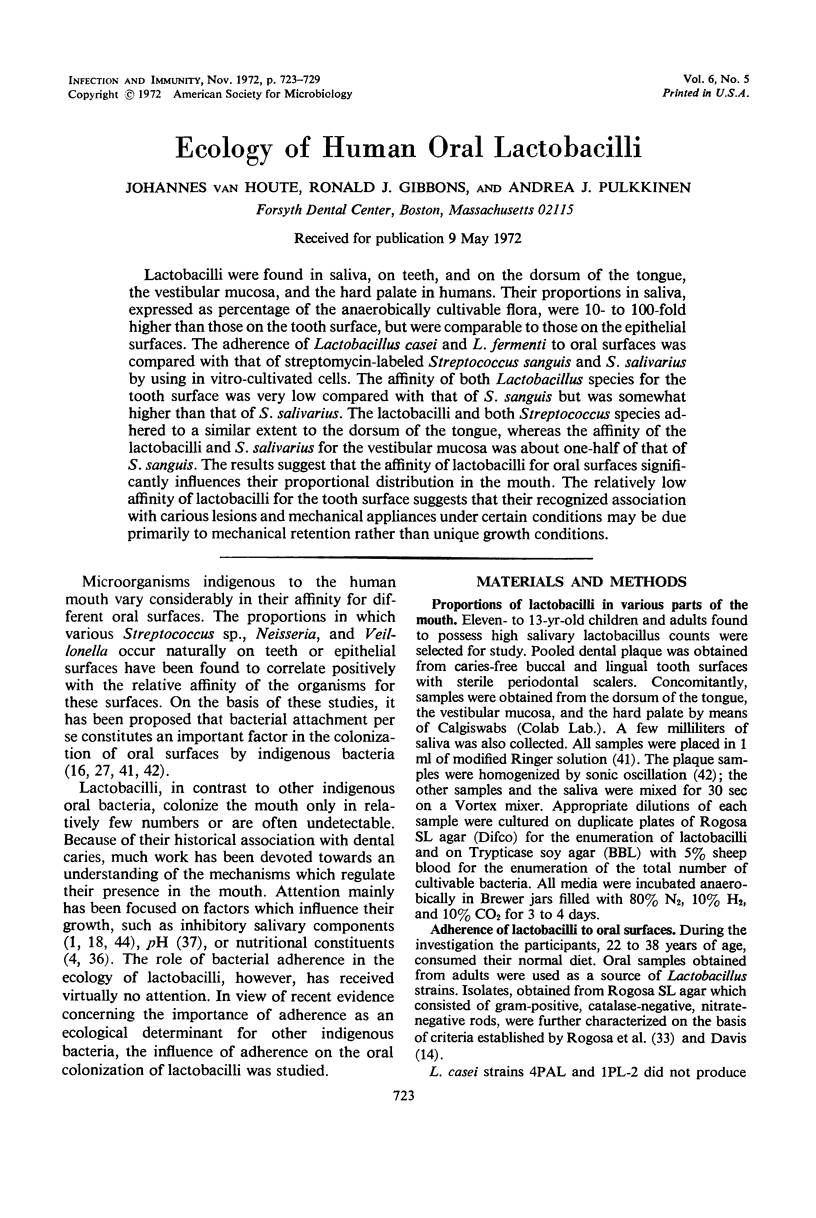
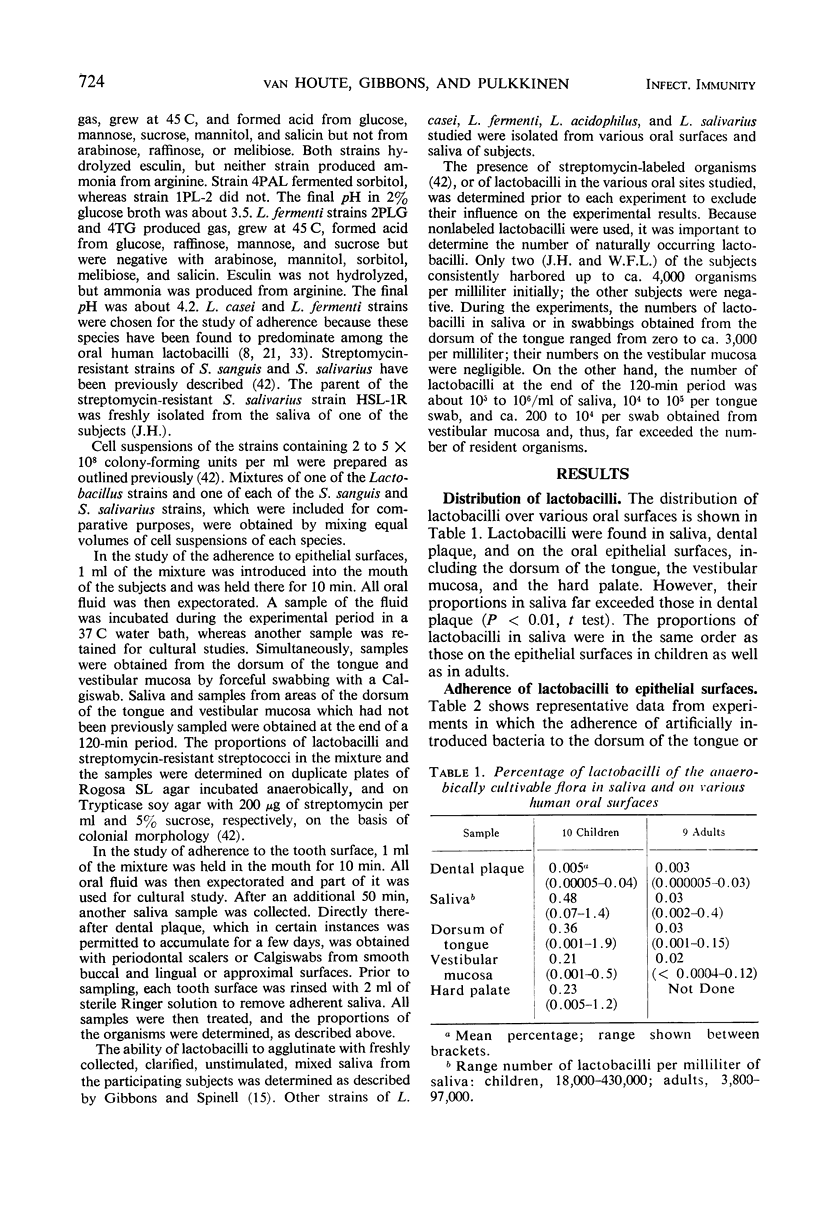
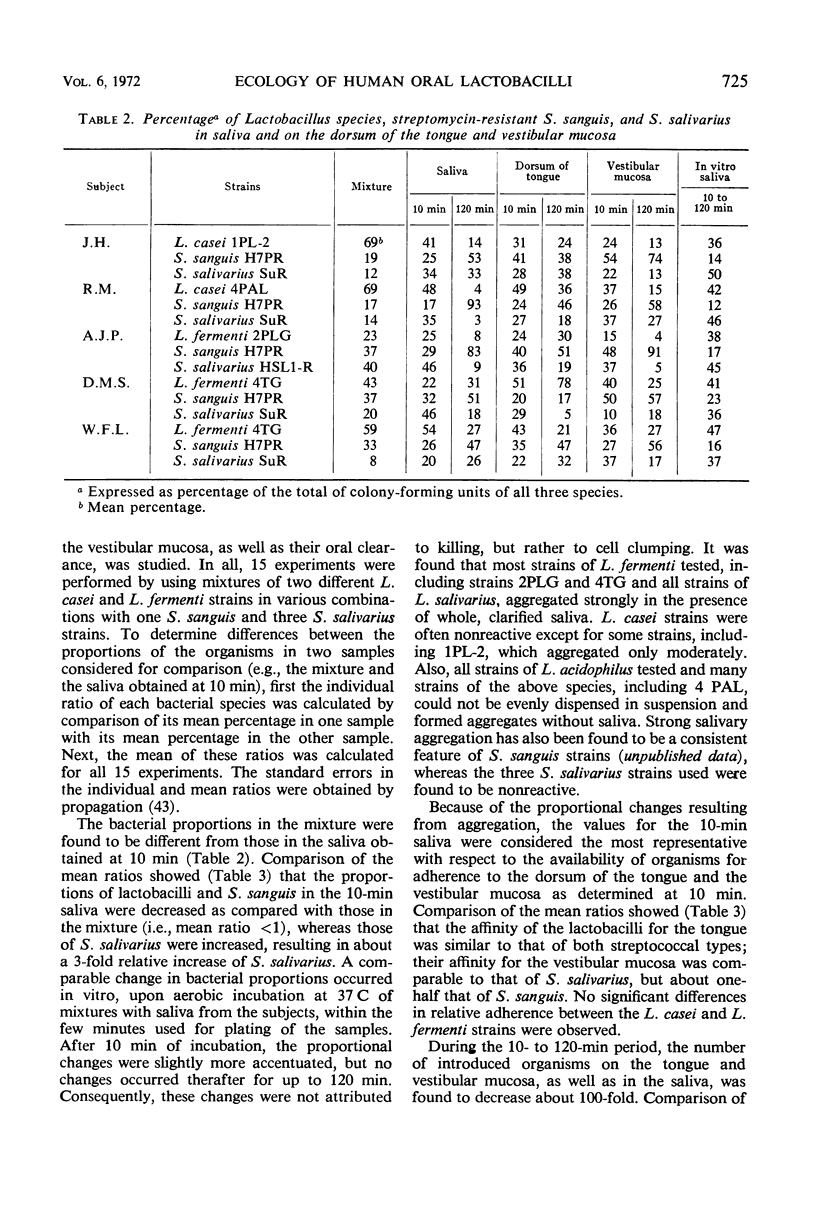
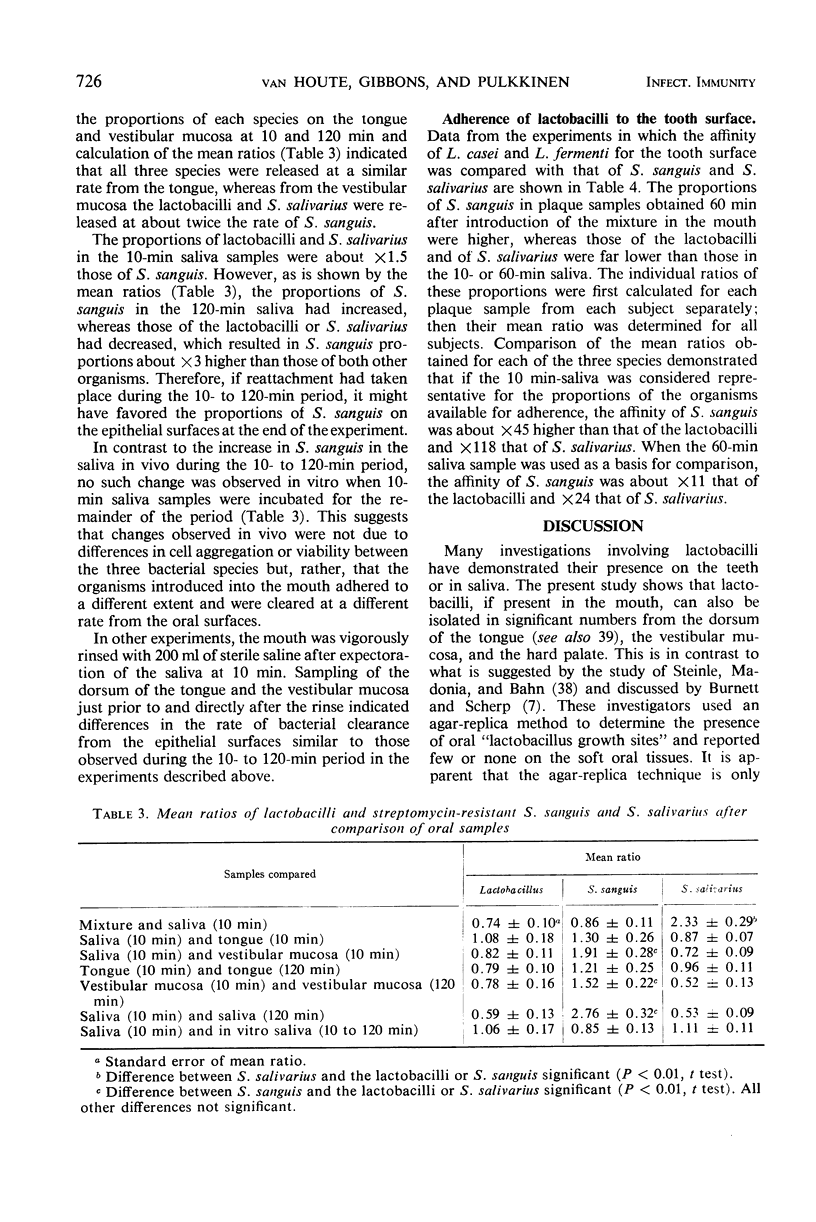
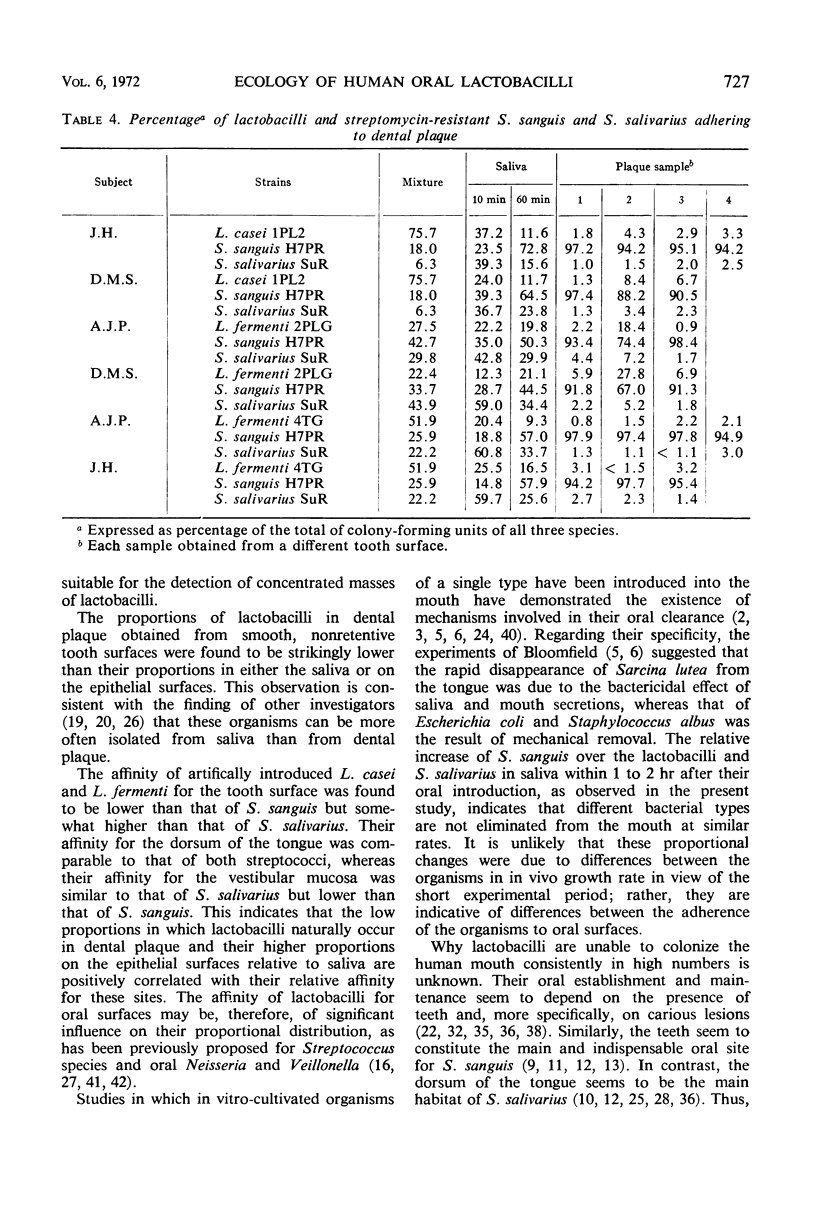
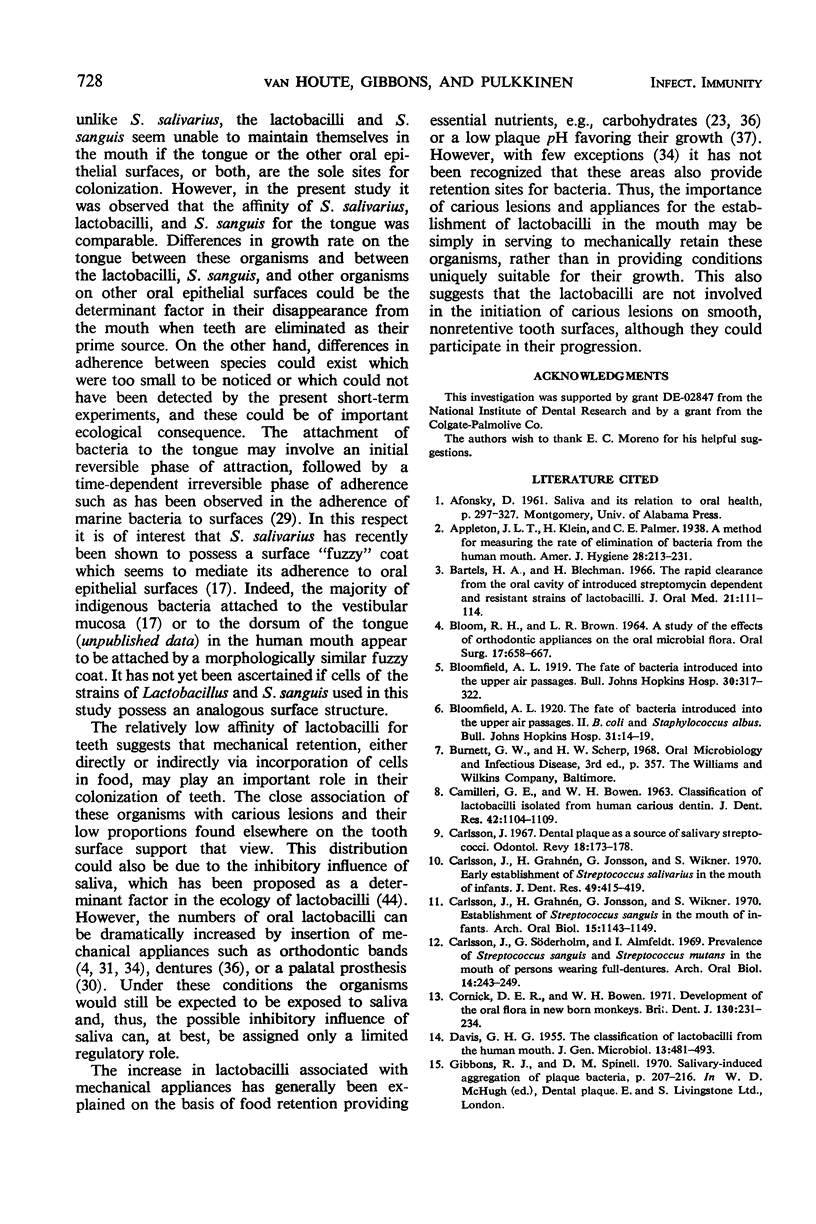
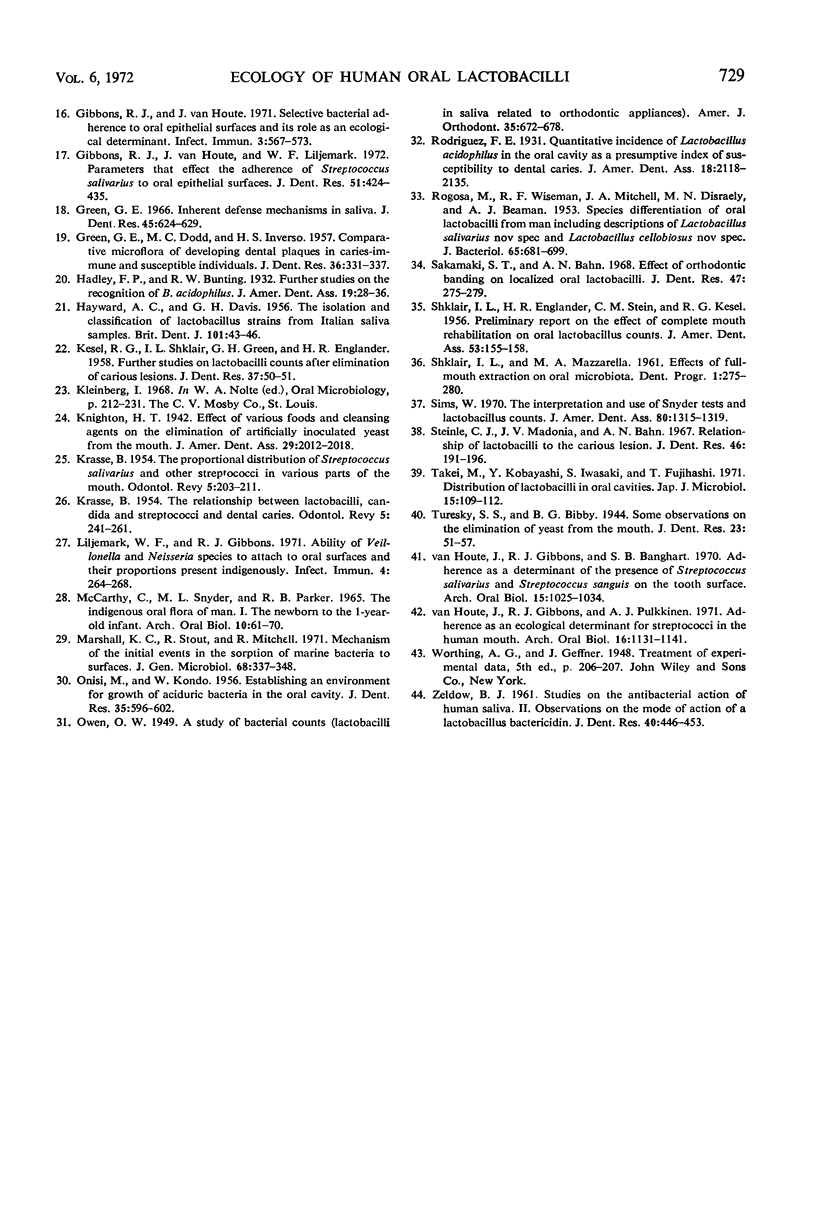
Selected References
These references are in PubMed. This may not be the complete list of references from this article.
- BLOOM R. H., BROWN L. R., Jr A STUDY OF THE EFFECTS OF ORTHODONTIC APPLIANCES ON THE ORAL MICROBIAL FLORA. Oral Surg Oral Med Oral Pathol. 1964 May;17:658–667. doi: 10.1016/0030-4220(64)90373-1. [DOI] [PubMed] [Google Scholar]
- Bartels H. A., Blechman H. The rapid clearance from the oral cavity of introduced streptomycin dependent and resistant strains of lactobacilli. J Oral Med. 1966 Jul;21(3):111–114. [PubMed] [Google Scholar]
- Carlsson J. Dental plaque as a source of salivary streptococci. Odontol Revy. 1967;18(2):173–178. [PubMed] [Google Scholar]
- Carlsson J., Grahnén H., Jonsson G., Wikner S. Early establishment of Streptococcus salivarius in the mouth of infants. J Dent Res. 1970 Mar-Apr;49(2):415–418. doi: 10.1177/00220345700490023601. [DOI] [PubMed] [Google Scholar]
- Carlsson J., Grahnén H., Jonsson G., Wikner S. Establishment of Streptococcus sanguis in the mouths of infants. Arch Oral Biol. 1970 Dec;15(12):1143–1148. doi: 10.1016/0003-9969(70)90005-1. [DOI] [PubMed] [Google Scholar]
- Carlsson J., Söderholm G., Almfeldt I. Prevalence of Streptococcus sanguis and Streptococcus mutans in the mouth of persons wearing full-dentures. Arch Oral Biol. 1969 Mar;14(3):243–249. doi: 10.1016/0003-9969(69)90226-x. [DOI] [PubMed] [Google Scholar]
- Cornick D. E., Bowen W. H. Development of the oral flora in new born monkeys (Macaca irus). Br Dent J. 1971 Mar 16;130(6):231–234. doi: 10.1038/sj.bdj.4802649. [DOI] [PubMed] [Google Scholar]
- DAVIS G. H. The classification of Lactobacilli from the human mouth. J Gen Microbiol. 1955 Dec;13(3):481–493. doi: 10.1099/00221287-13-3-481. [DOI] [PubMed] [Google Scholar]
- GREEN G. E., DODD M. C., INVERSO H. S. Comparative microflora of developing dental plaques in caries-immune and susceptible individuals. J Dent Res. 1957 Jun;36(3):331–337. doi: 10.1177/00220345570360030201. [DOI] [PubMed] [Google Scholar]
- Gibbons R. J., Van Houte J., Liljemark W. F. Parameters that effect the adherence of Streptococcus salivarius to oral epithelial surfaces. J Dent Res. 1972 Mar-Apr;51(2):424–435. doi: 10.1177/00220345720510023101. [DOI] [PubMed] [Google Scholar]
- Gibbons R. J., van Houte J. Selective bacterial adherence to oral epithelial surfaces and its role as an ecological determinant. Infect Immun. 1971 Apr;3(4):567–573. doi: 10.1128/iai.3.4.567-573.1971. [DOI] [PMC free article] [PubMed] [Google Scholar]
- KRASSE B. The proportional distribution of Streptococcus salivarius and other streptococci in various parts of the mouth. Odontol Revy. 1954;5(3):203–211. [PubMed] [Google Scholar]
- KRASSE B. The relationship between lactobacilli, Candida and streptococci and dental caries; examination of saliva and plaque material collected on the same occasion. Odontol Revy. 1954;5(4):241–261. [PubMed] [Google Scholar]
- Liljemark W. F., Gibbons R. J. Ability of Veillonella and Neisseria species to attach to oral surfaces and their proportions present indigenously. Infect Immun. 1971 Sep;4(3):264–268. doi: 10.1128/iai.4.3.264-268.1971. [DOI] [PMC free article] [PubMed] [Google Scholar]
- MCCARTHY C., SNYDER M. L., PARKER R. B. THE INDIGENOUS ORAL FLORA OF MAN. I. THE NEWBORN TO THE 1-YEAR-OLD INFANT. Arch Oral Biol. 1965 Jan-Feb;10:61–70. doi: 10.1016/0003-9969(65)90058-0. [DOI] [PubMed] [Google Scholar]
- ONISI M., KONDO W. Establishing an environment for growth of aciduric bacteria in the oral cavity. J Dent Res. 1956 Aug;35(4):596–602. doi: 10.1177/00220345560350041401. [DOI] [PubMed] [Google Scholar]
- ROGOSA M., WISEMAN R. F., MITCHELL J. A., DISRAELY M. N., BEAMAN A. J. Species differentiation of oral lactobacilli from man including description of Lactobacillus salivarius nov spec and lactobacillus Cellobiosus nov spec. J Bacteriol. 1953 Jun;65(6):681–699. doi: 10.1128/jb.65.6.681-699.1953. [DOI] [PMC free article] [PubMed] [Google Scholar]
- SHKLAIR I. L., ENGLANDER H. R., STEIN L. M., KESEL R. G. Preliminary report on the effect of complete mouth rehabilitation on oral lactobacilli counts. J Am Dent Assoc. 1956 Aug;53(2):155–158. doi: 10.14219/jada.archive.1956.0159. [DOI] [PubMed] [Google Scholar]
- Sakamaki S. T., Bahn A. N. Effect of orthodontic banding on localized oral lactobacilli. J Dent Res. 1968 Mar-Apr;47(2):275–279. doi: 10.1177/00220345680470021301. [DOI] [PubMed] [Google Scholar]
- Sims W. The interpretation and use of Snyder tests and lactobacillus counts. J Am Dent Assoc. 1970 Jun;80(6):1315–1319. doi: 10.14219/jada.archive.1970.0276. [DOI] [PubMed] [Google Scholar]
- Steinle C. J., Madonia J. V., Bahn A. N. Relationship of lactobacilli to the carious lesion. J Dent Res. 1967 Jan-Feb;46(1):191–196. doi: 10.1177/00220345670460010901. [DOI] [PubMed] [Google Scholar]
- Takei M., Kobayashi Y., Iwasaki S., Fujihashi T. Distribution of lactobacilli in oral cavities. Jpn J Microbiol. 1971 Jan;15(1):109–112. doi: 10.1111/j.1348-0421.1971.tb00559.x. [DOI] [PubMed] [Google Scholar]
- Van Houte J., Gibbons R. J., Banghart S. B. Adherence as a determinant of the presence of Streptococcus salivarius and Streptococcus sanguis on the human tooth surface. Arch Oral Biol. 1970 Nov;15(11):1025–1034. doi: 10.1016/0003-9969(70)90115-9. [DOI] [PubMed] [Google Scholar]
- Van Houte J., Gibbons R. J., Pulkkinen A. J. Adherence as an ecological determinant for streptococci in the human mouth. Arch Oral Biol. 1971 Oct;16(10):1131–1141. doi: 10.1016/0003-9969(71)90042-2. [DOI] [PubMed] [Google Scholar]


